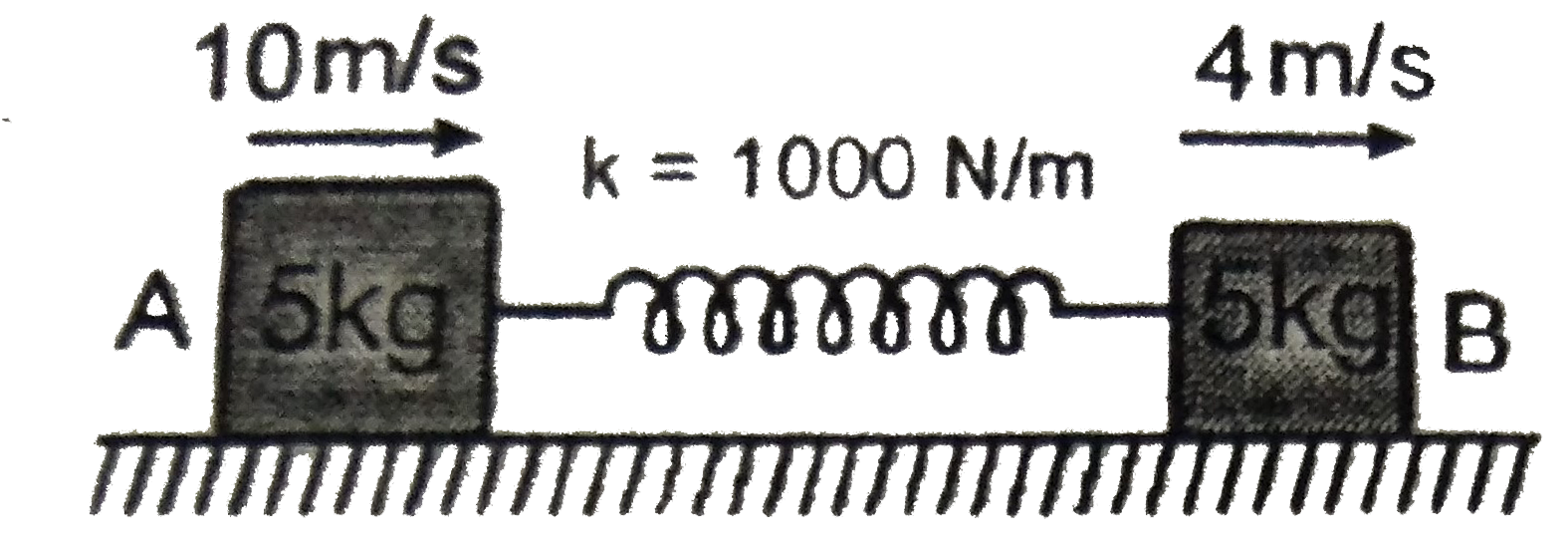Complete Solutions to dpp 68 of chapter DAILY PRACTICE PROBLEMS of Class 11 book with complete answers and questions
| Class 11 | PHYSICS |
| Chapter | DAILY PRACTICE PROBLEMS |
| RESONANCE | dpp 68 |
| Number Of Questions | 7 |
| Academic Year | 2023-24 |
A body of mass m is released from a height h on a smooth inclined plane that is shown in the figure. The following can be true about the velocity of the block knowing that the wedge is fixed.
 .
.
View SolutionA man pulls a solid cylinder `(` initially at rest `)` horizontal by a massless string. The string is wrapped on the cylinder and the cylinder performs pure rolling. Mass of the cylinder is `100kg`, radius is `pi` metre `&` tension in string is `100N`. Then the angular speed of the cylinder after one revolution will be `:`

View SolutionA uniform pole of length `L` and mass `M` is pivoted on the ground with a frictionless hinge. The pole makes an angle `theta` with the horizontal. The moment of inertia of the pole about one end is `( 1/3) ML^(2)`. If it starts falling front the position shown in the accompanying figure, the linear acceleration of the free end of the pole immediately after release would be

View SolutionTwo blocks `A (5 kg)` and `B( 5kg)` attached to the ends of a spring constant `1000 N//m` are placed on a smooth horizontal plane with the spring undeformed . Simultaneously velocities of `10m//s` and `4m//s` along the line of the spring in the same direction are imparted to` A` and `B` then

View SolutionA rod `AC` of length `l` and mass `m` is kept on a horizontal smooth plane. It is free to rotate and move. A particle of same mass `m` moving on the plane with velocity `v` strikes the rod at point `B` making angle `37^@` with the rod. The collision is elastic. After collision,

View SolutionA block of dimensions `axxaxx2a` is kept on an inclined plane of inclination `37^(@)`. The longer side is perpendicular to the plane. The co`-` efficient of friction between the block and the plane is `0.8.` By numerical analysis find whether the block will topple or not.
View SolutionTwo separate cylinders of masses `m(=1 kg ) & 4m` radii `R(=10cm)` and `2R` rotating in clockwise direction with `omega_(1)=100rad //sec` and `omega_(2)=200 rad//sec` respectively. Now they are held in contact with each other as in figure. Determine their angular velocities after the slipping after the slipping between the cylinders. stops.

View Solution
dpp 68 questions and complete solutions for chapter DAILY PRACTICE PROBLEMS of RESONANCE ENGLISH of Class 11
All Exercises from RESONANCE Class 11 PHYSICS DAILY PRACTICE PROBLEMS
- comprehension
- Compreshension
- dpp 15
- dpp 16 physics
- dpp 17
- dpp 18
- dpp 19
- dpp 2 PHYSICS
- dpp 20
- dpp 21
- dpp 22.
- dpp 24
- dpp 25
- dpp 26
- dpp 27
- dpp 28
- dpp 30
- dpp 31
- dpp 32
- dpp 33
- dpp 34
- DPP 35
- dpp 36
- Dpp 37
- dpp 38
- dpp 39
- dpp 40
- dpp 41
- dpp 42
- dpp 43
- dpp 44
- DPP 45
- dpp 46
- dpp 47
- dpp 48
- dpp 49
- DPP 50
- dpp 51
- dpp 52
- dpp 53
- dpp 54
- DPP 55
- dpp 56
- dpp 57
- dpp 58
- dpp 59
- dpp 60
- DPP 62
- dpp 63
- dpp 64
- DPP 65
- dpp 66
- dpp 67
- dpp 68
- dpp 69
- dpp 70
- dpp 71
- dpp 72
- dpp 74
- dpp 75
- dpp 76
- DPP 77
- dpp 78
- dpp 79
- DPP 8 PHYSICS
- dpp 80
- dpp 81
- dpp 82
- dpp 83
- dpp 84
- dpp 85
- dpp 86
- dpp 87
- dpp 88
- dpp 89 illustration
- dpp 90 Illustration
- dpp 91 illustration
- dpp 92 illustration
- Dpp no 10 physics
- Dpp no 11 physics
- Dpp no 12 Physics
- Dpp no 6 physics
- DPP NO 7 PHYSICS
- DPP no 9 physics
- Dpp no. 13 physics
- DPP NO. 14 PHYSICS
- DPP NO. 5 Physics
- dpp23
- dpp29
- dpp61
- dpp73
- Now answer the following :
- PHYSICS
- TRUE/FALSE